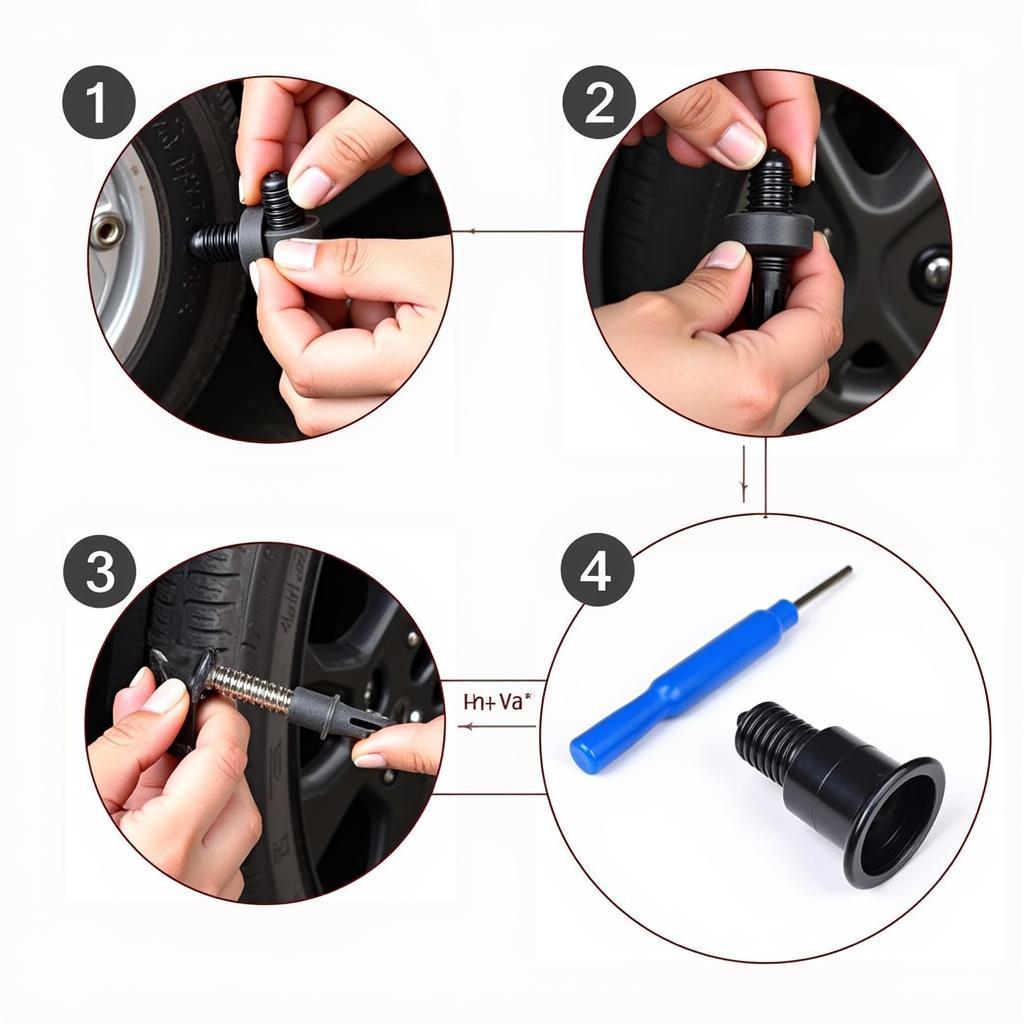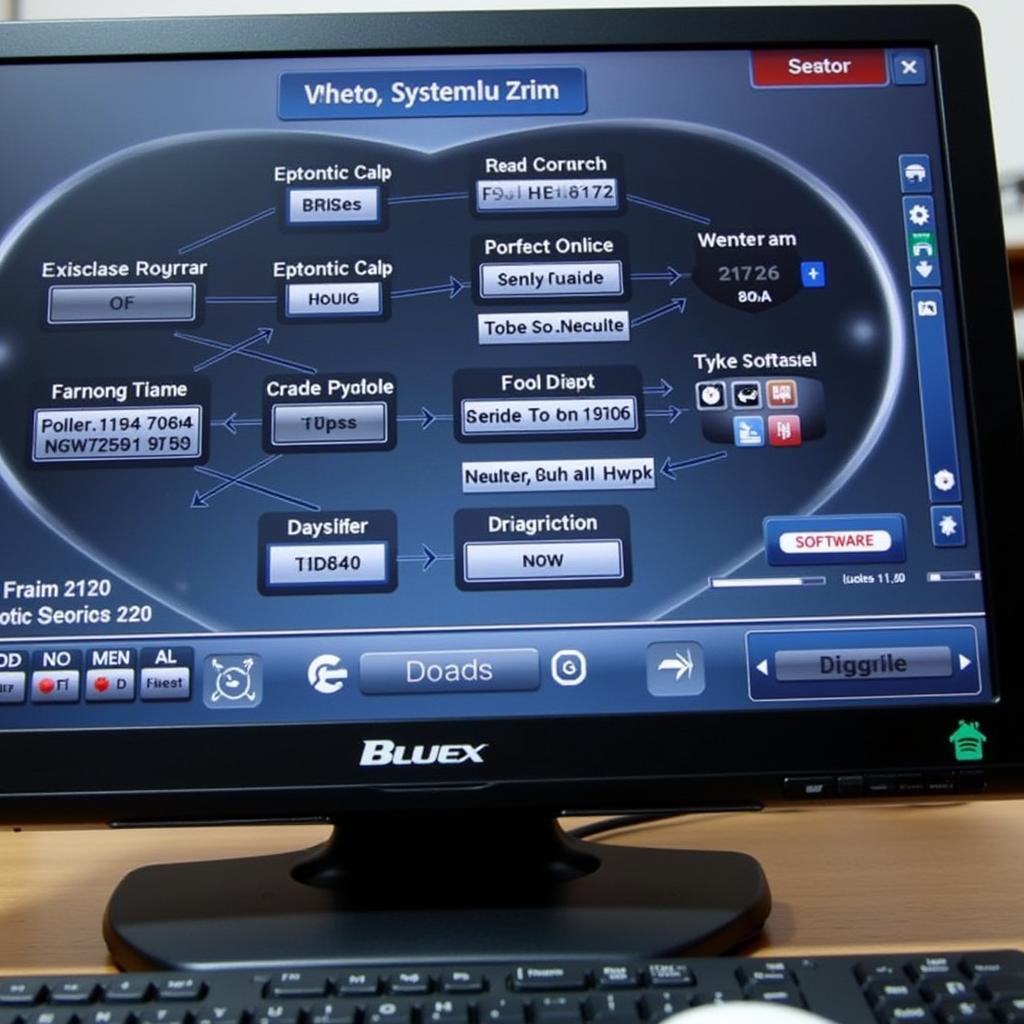A brake light warning on your dashboard can be a minor annoyance or a sign of a serious safety issue. Understanding the causes and solutions is crucial for maintaining your vehicle’s safety and avoiding potential accidents. This article covers everything from simple bulb replacements to more complex electrical issues and how remote diagnostics can help.
Common Causes of a Brake Light Warning
There are several reasons why your brake light warning might illuminate. Let’s explore the most common culprits:
Burnt-Out Bulbs
The most frequent cause is a simple burnt-out brake light bulb. These bulbs have a limited lifespan and will eventually fail. Checking your brake lights regularly is a good preventative measure.
Blown Fuse
A blown fuse in the brake light circuit can also trigger the warning light. This is usually an easy fix with a simple fuse replacement. Identifying the correct fuse is key to resolving this issue.
Faulty Brake Light Switch
The brake light switch, located under the brake pedal, is responsible for activating the brake lights when the pedal is depressed. A malfunctioning switch can lead to a continuous warning light or prevent the lights from illuminating altogether.
Wiring Problems
Damaged or corroded wiring in the brake light circuit can cause intermittent or complete failure of the brake lights. This often requires more in-depth troubleshooting to identify and repair the affected wires.
Issues with the Brake Light Assembly
Problems with the brake light assembly itself, such as cracks or damage, can affect the lights’ functionality. This may require replacing the entire assembly.
Troubleshooting Your Brake Light Warning
Here’s a step-by-step guide to help you troubleshoot the brake light warning:
- Check the Bulbs: Inspect all brake light bulbs for signs of burning or damage. Replace any burnt-out bulbs with the correct type.
- Check the Fuses: Locate the brake light fuse in your vehicle’s fuse box (refer to your owner’s manual) and inspect it for any breaks or burns. Replace a blown fuse with a new one of the same amperage rating.
- Inspect the Brake Light Switch: Locate the brake light switch under the brake pedal. Check for any signs of damage or looseness. You might need to test the switch with a multimeter to determine if it’s functioning correctly.
- Examine the Wiring: Visually inspect the wiring harness connected to the brake lights for any fraying, corrosion, or damage. Repair or replace any affected wires.
Remote Diagnostics and Software Solutions
Sometimes, the brake light warning can stem from software glitches within the vehicle’s electronic control unit (ECU). This is where remote diagnostics and software solutions come into play.
How Remote Diagnostics Works
Remote diagnostics allows skilled technicians to access your vehicle’s ECU remotely and pinpoint the root cause of the brake light warning. This often saves time and money compared to traditional diagnostic methods.
Software Updates and Programming
In some cases, a simple software update or reprogramming of the ECU can resolve the issue. This can be done remotely, eliminating the need for a trip to the repair shop.
 Replacing a Brake Light Bulb
Replacing a Brake Light Bulb
“Remote diagnostics is revolutionizing how we approach vehicle repairs,” says John Smith, Senior Automotive Electrical Engineer at AutoTech Solutions. “It allows us to quickly and efficiently diagnose and resolve problems, often without the customer ever having to leave their home.”
Benefits of Remote Diagnostics and Software Solutions
- Convenience: Fixes can be implemented from anywhere, saving you time and hassle.
- Cost-Effective: Often less expensive than traditional repair methods.
- Efficient: Faster diagnosis and quicker turnaround times for repairs.
- Expert Support: Access to experienced technicians with specialized knowledge.
 Remote Diagnostics Software Interface
Remote Diagnostics Software Interface
“Regular software updates are essential for maintaining optimal vehicle performance and safety,” adds Maria Garcia, Lead Software Engineer at AutoTech Solutions. “They address bugs, improve functionality, and ensure that your vehicle’s systems are operating as intended.”
Conclusion
A brake light warning shouldn’t be ignored. While sometimes the fix is as simple as replacing a bulb, more complex issues might require professional assistance. Remote diagnostics and software solutions offer a convenient, cost-effective, and efficient way to troubleshoot and resolve brake light warnings, ensuring your vehicle’s safety and reliability. Don’t delay addressing this important warning – your safety depends on it!
FAQ
- How often should I check my brake lights? It’s a good practice to check your brake lights at least once a month.
- Can I replace a brake light bulb myself? Yes, in most cases, replacing a brake light bulb is a simple DIY task.
- What should I do if I replace the bulb and the warning light stays on? If the warning light persists, there might be a more complex issue, and you should seek professional help.
- How much does remote diagnostics typically cost? The cost varies depending on the provider and the complexity of the issue.
- Is remote diagnostics safe for my vehicle? Yes, remote diagnostics is a safe and reliable method for troubleshooting vehicle problems.
- What if my car doesn’t support remote diagnostics? In that case, traditional diagnostic methods will be necessary.
- How can I find a reputable remote diagnostics provider? Research online reviews and ask for recommendations from trusted mechanics or friends.
